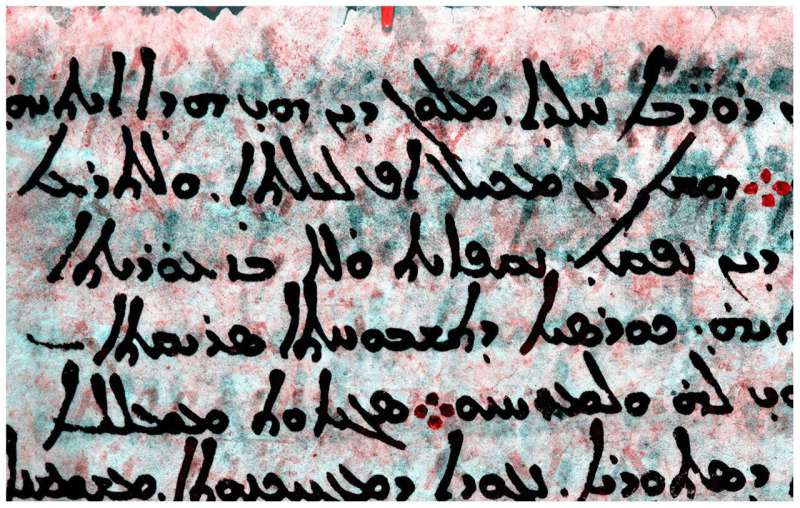A trio of researchers from CNRS, UMR, Tyndale House and Sorbonne Université, respectively, have found what might be the famous Hipparchus’s map of the stars. In their paper published in Journal for the History of Astronomy, Victor Gysembergh, Peter Williams and Emanuel Zingg describe a palimpsest manuscript that was found at the Greek Orthodox St Catherine’s Monastery on the Sinai Peninsula, and what they believe it describes.
Historians have long believed that a catalog of the stars was created long ago by early Greek astronomer Hipparchus—his catalog was believed to represent the earliest map of the stars. But lack of physical evidence of such a map has left the record for creation of the earliest star map to Ptolemy. In this new effort, the researchers believe they have found part of the catalog that Hipparchus created sometime between 162 and 127 BCE.

The work began with study of a palimpsest manuscript that was originally found at the Greek Orthodox St Catherine’s Monastery and is now owned by the Museum of the Bible in Washington, D.C. The team noted that the material on which the text had been printed was written over text that had been scraped away, allowing for reuse—a common practice during the period. Intrigued, one of the team members asked a group of students to see if they could make out any of the prior text. One of them, Jamie Klair, found what appeared to be a line of text that had previously been seen in work by Eratosthenes, an astronomer.

The researchers conclude that their evaluation of the manuscript very strongly suggests it was created by Hipparchus and that it represents the oldest star map known to exist.





